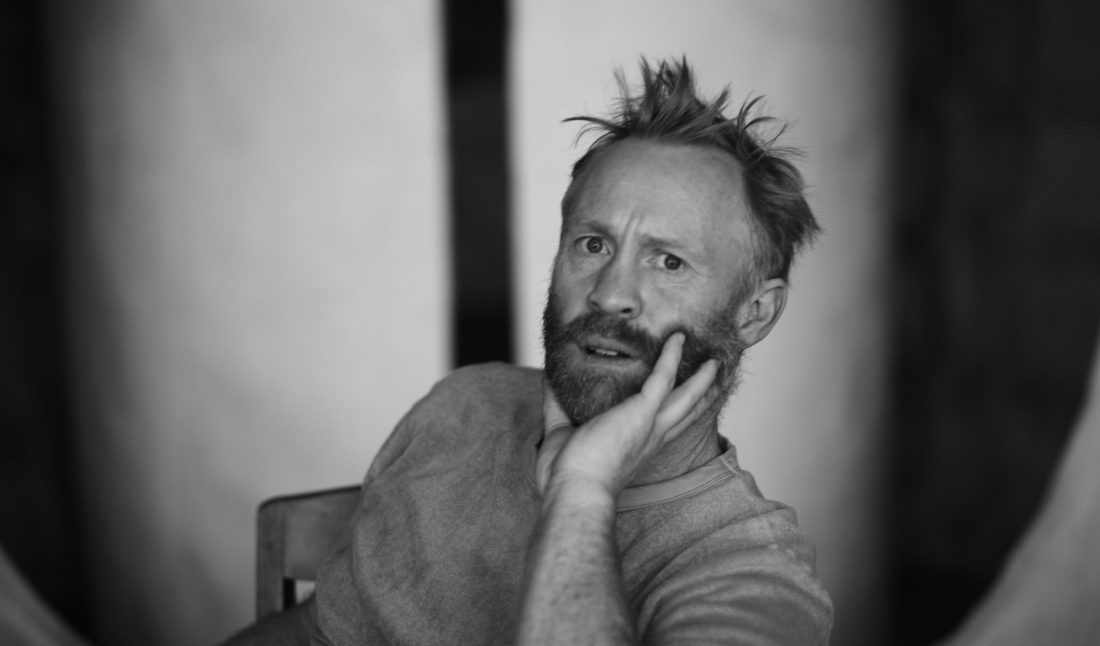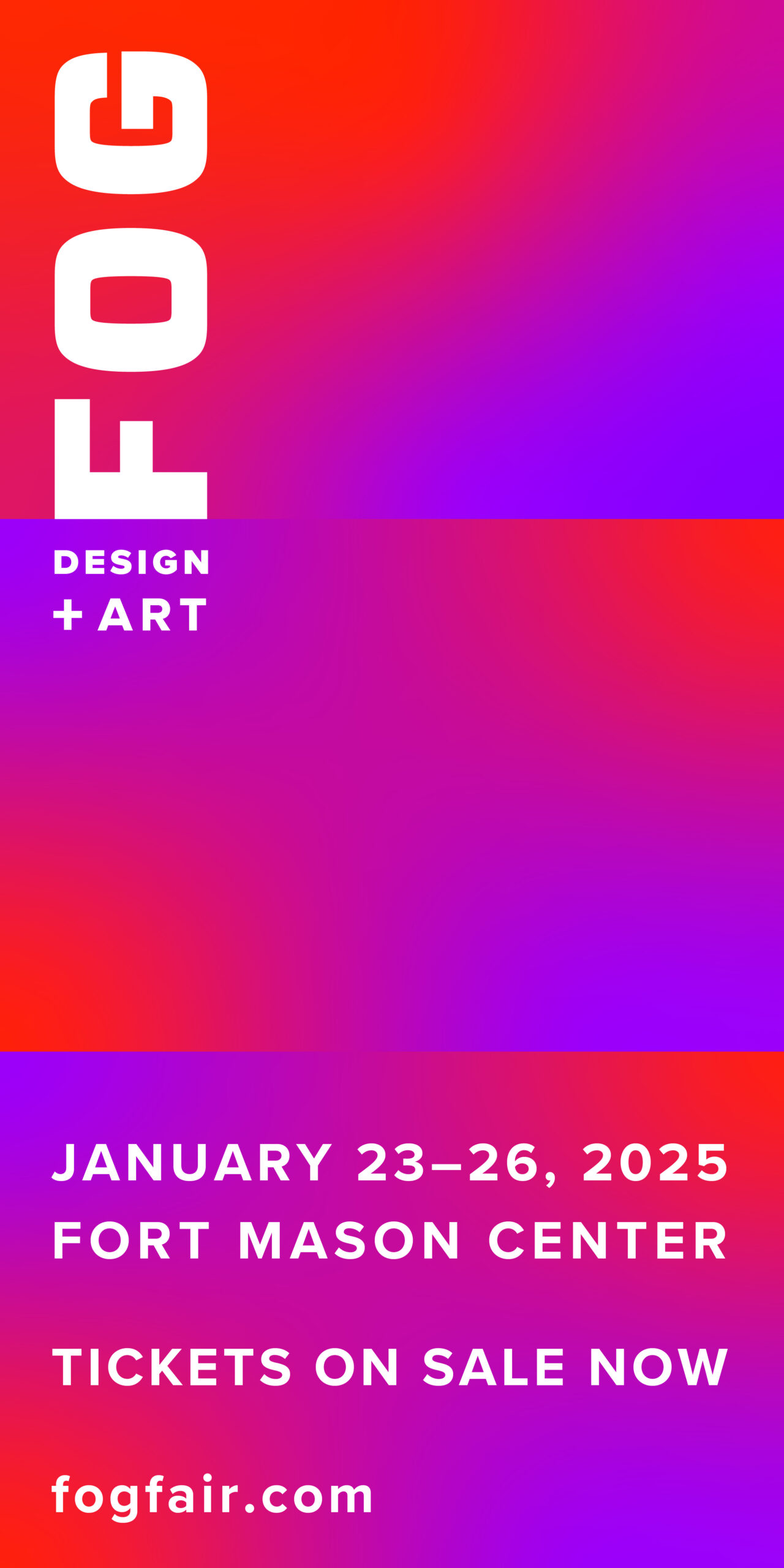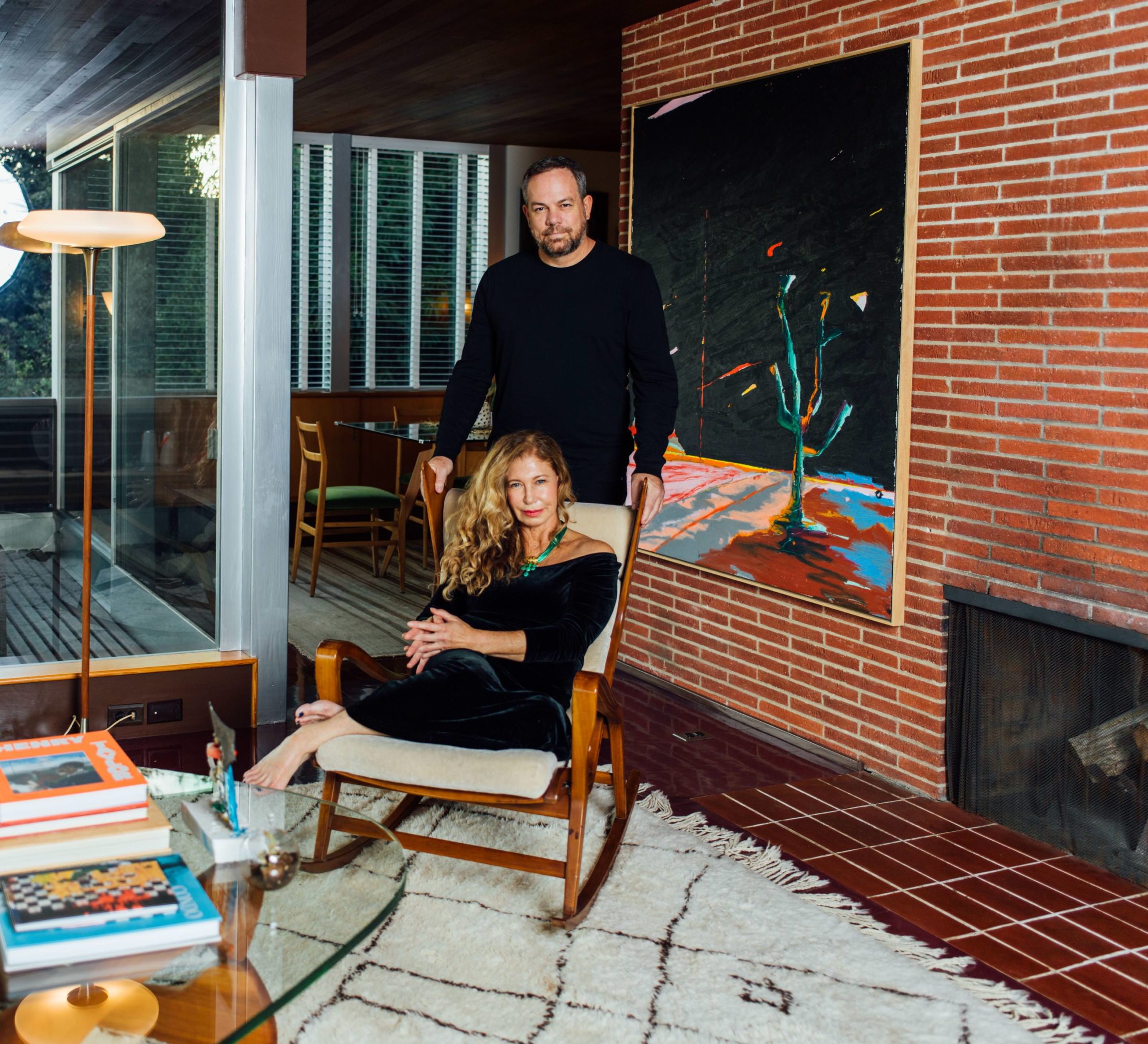In 2008 Thomas Houseago moved to Los Angeles, where he found an industrial space with even more room than he maybe needed. But if you’ve seen his work (and we’re sure you have), that kind of sculpture and scale needs square footage—to be made, to be seen, to be felt. Around ten years later, he has certainly found his groove there—a balance of work, socializing with friends and family, and loving that Los Angeles light.
Whitewaller caught up with the artist in advance of his major survey at the Musée d’Art moderne de la Ville de Paris this March, “Almost Human.” On view is a range of work from throughout his career, including a site-specific new installation, Cast Studio (stage – chairs – bed – mound – cave – bath – grave) that addresses the making and performance of sculpture.
WHITEWALLER: What is usually the starting place for you with a new work or series?
THOMAS HOUSEAGO: I don’t know if there really is ever an end to one work and the beginning of another, in a sense. I carry a book around constantly where I jot down thoughts, drawings, notes from conversations, and from that combination of activities ideas for new works start to come through. When the work is going well, each piece flows into the next and each work suggests new ideas. Sometimes I’ll consider a work finished, but see it again later—even sometimes years later—and see a new starting point in that piece and restart and reengage on that piece again and it will set off a whole new direction of work.
WW: Can you tell us about how you’ve been preparing for your upcoming solo show at the Musée d’Art moderne de la Ville de Paris in March?
TH: I underestimated the scope of work and the depth that you have to go into yourself for a show like this, for a kind of survey show. It’s been an incredible and very, very intense process. A sort of process of excavation that began many years ago has now become my primary activity in the last year and a half.
I had to really look into where I come from, where the work comes from, digging into myself, my references, my past. In my case, my childhood and the journey that my work took from the beginnings of pieces I could really argue were artworks—when I was 16, 17, 18, I was already kind of making artworks—through to now.
You know, I think it’s impossible to show everything and to make one clear statement about what your work is, but certainly you begin to build some kind of story. With the curators, we began to really create a dynamic in each room of the show that dealt with certain issues in the work, and it’s amazing to see these connections, themes, ideas that link through time arising.
WW: What is the story behind the title of the exhibition, “Almost Human”?
TH: When I was young, my mom used to listen to Leonard Cohen and that song “Suzanne” used to play a lot when I was a kid. His voice, and just the sort of strangeness of that song, always resonated with me.
I hadn’t really ever thought about that phrase in the song, “almost human,” until recently. It really strikes me that people have often described my work as monsters or creatures or half-finished or headless and all these things, and I’ve seen that myself. But I began to make this tie-in between those things and what was coming up in the work and the healing I was doing on myself through somatic experiencing.
As I was preparing for the show, looking back through my artwork I’d done in the mid-nineties and even when I was younger in the late eighties, I was listening to Nina Simone a lot this summer and particularly her rendition of “Suzanne.” There’s something extraordinary about the way she sings that song, both this oddly optimistic quality to the song and then these super powerful, frail, raw tones in which she sings it. As I was listening, I was thinking about the show and the way she intonates “almost human” and it rang out like a bell. It really moved me and really stopped me.
In that title there’s both a kind of mourning about the experience I’ve had in the past and yet there’s also some kind of awareness of a hope of becoming more fully human and more fully alive.
WW: Tell us about your studio space in L.A.?
TH: I’m incredibly lucky that I was able to move into several industrial buildings in L.A. during the financial crisis that hit really hard around 2008 to 2009. I didn’t really know quite how I would use or if I really needed all of it, but I had learned over the twenty-plus years that I’d been working that I needed space and storage, and sculpture really requires space in the way I wanted to do it. One building functions as the nerve center; it has a place called the drawing room, which is where I draw, but it’s also where the computers are and where Muna and I, and then friends, come through. And that building is where I work on the clay.
In a separate building, I have a group of sculptures that I’ve made that I put out and look at, think about, and I finish works in there. I live with finished work, older works, or with current works. Then I have a painting studio. And sometimes I’ll move between those three rooms throughout the day. I’ll work on different projects.
Music is very important to me. I cannot work without music. The studio for me is such an important and particular and significant space that often it’s the work and it’s the atmosphere that guides you. And then we often have people dropping by. Friends are really important to the creative space—kids, too. There’s a real interface between more, you could say, private, solipsistic artistic activity and a more social, collaborative artistic activity.
And the light of Los Angeles. You’ve always got the light and the outdoor spaces, and it’s just something that I find incredibly nourishing.











